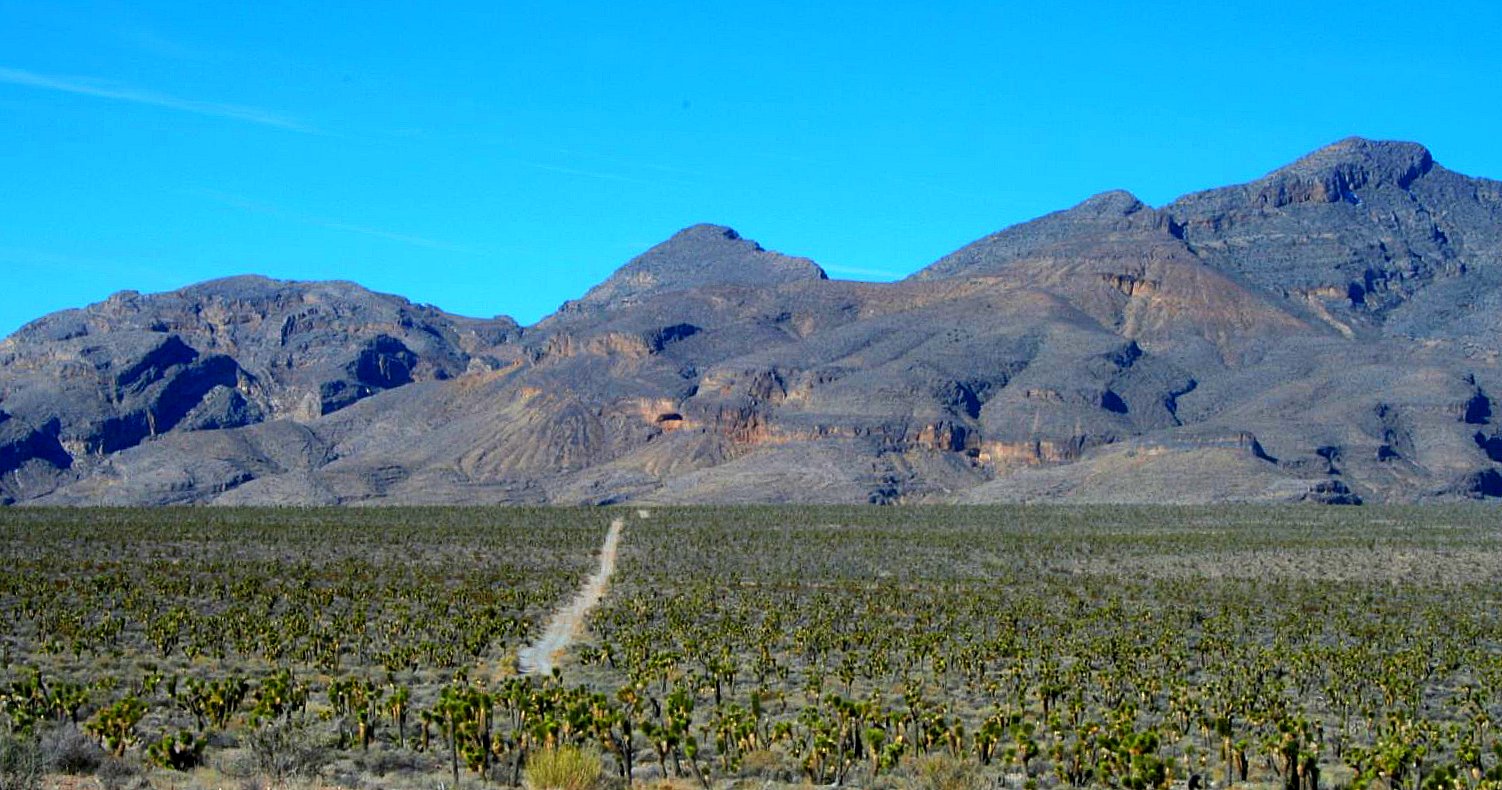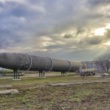On the last day of May, Texas Attorney General Ken Paxton sued Rick Perry. It was the second lawsuit Paxton filed against the energy secretary and former Texas governor in three months. Perry is one of a half-dozen defendants named in the two filings at the U.S. Fifth Circuit Court of Appeals, as Paxton attempts to compel the Department of Energy and the Nuclear Regulatory Commission to restart the licensing process for Yucca Mountain, a high-level nuclear waste repository in southern Nevada.
Perry hasn’t responded, but his position on nuclear waste disposal is no state secret. At his Senate confirmation hearing, he criticized the delay addressed in the two lawsuits. Within weeks of being confirmed by the Senate, he traveled to Yucca Mountain to tour the proposed site and meet with the state’s governor.
With Perry, the Trump administration is picking up where the George W. Bush administration left off more than eight years ago. Bush’s Department of Energy applied to the NRC in June 2008 for a license to develop the waste site at Yucca Mountain, which the DOE had been studying since the late 1980s. The Obama administration pulled the plug on the licensing process in 2010, in part because Obama appeared to be skeptical of the scientific conclusions behind the site selection (he appointed a high-profile critic of the science to the NRC), but equally if not more importantly because Senate Majority Leader Harry Reid, backed by public opinion at home in Nevada, rejected a plan that made his state the national dumping ground for nuclear waste without local consent.
By then, the repository 80 miles north of Las Vegas had already cost taxpayers $100 billion. Trump’s budget would sink another $120 million into a manmade cavern that is, at best, politically radioactive. Yet at his Senate confirmation hearing, Perry suggested he was ready to move the nation’s nuclear waste from on-site storage at power plants to a permanent site.
Congress has defined Yucca Mountain as the only “permanent” site for utility-generated radioactive waste.
Nevada’s Republican Governor Brian Sandoval is opposed to the Yucca Mountain site, and the state’s attorney general has intervened in the lawsuit filed by the Texas attorney general, who is demanding that the NRC schedule an up-or-down vote on the Yucca Mountain license. While that’s unlikely to happen for a while, Perry seemed to suggest another alternative when he told Senate committee members he wants Trump’s legacy to include the “moving to temporary or permanent siting of this nuclear waste.”
Does “temporary” mean “Texas”? Could it mean ramrodding a permit through the licensing process, as Perry did when he was governor of Texas in 2011, to help a friend and political donor who provided him with $1,120,000 in campaign contributions?
As reported here in February, as governor of Texas, Perry presided over the expedited permitting of a low-level nuclear waste disposal facility in the Texas Panhandle. At the time, the governor was working on behalf of Dallas billionaire Harold Simmons, a corporate raider who over 35 years provided a good deal of the money that turned a centrist Democratic state into a right-wing Republican state, and who in 1995 acquired Waste Control Specialists.
The licensing process for WCS’s low-level disposal site in Andrews, Texas, was protracted and contentious. Four major aquifers flow under the site; the large and critically important Ogallala Aquifer flows 14 feet below the lowest extremity of the excavated nuclear waste disposal pit.
In a 2007 memo drafted for the Texas Commission on Environmental Quality, four engineers warned that the site was too close to the water table, making “groundwater intrusion into the disposal units highly likely.” And eight of the governor’s environmental staffers openly opposed permitting the Andrews site.
When Simmons secured his low-level waste permit in 2011, three staff members (not political appointees) left the commission. One of the staffers, an engineer, told The Texas Observer that he had concluded the site was geologically unsuitable for the storage of nuclear waste.
Yet WCS’s CEO described the site as an “ideal location for disposing low-level radioactive waste,” and since its licensing, the Andrews dump has been receiving shipments of low-level radioactive material from reactors, hospitals, weapons manufacturers, and other generators of radioactive material.
While Perry restarts the licensing process at Yucca Mountain, where approval is likely to take years, if not decades, he might end up angling for a Texas solution.
Though Simmons is no longer in the picture, WCS, with its facility up and running in the Panhandle, is looking to convert the low-level waste site it licensed in Texas into a national repository for high-level nuclear waste—that is, spent fuel rods from nuclear power plants across the country.
In its attempt to privatize the storage of nuclear waste, WCS is requesting the NRC to license its facility to store 3,000 canisters of high-level nuclear waste for 40 years, by which time a permanent site might be approved, either at Yucca Mountain or in the latest iteration of long-term disposal under study by DOE engineers: drilling deep into the earth’s crust and burying and sealing the 78,000 metric tons of waste already generated by power companies. Meanwhile, WCS’s president, Rod Baltzer, has made it clear that he expects the DOE to assume responsibility for the high-level radioactive waste he wants dumped in Texas.
What has changed? Obviously not the geology, already described by environmental engineers working for Texas as unsuitable for the storage of even low-level nuclear waste. What’s changed is that Donald Trump is in the White House and Rick Perry is at the DOE.
The struggle over siting (and paying for) the storage of radioactive and volatile spent fuel is the endgame in America’s romance with nuclear power. Rick Perry is already on record in support of bringing high-level nuclear waste into his home state, and though the decision on the Texas site will ultimately be made by the NRC, Perry is now better positioned than ever to turn a barren stretch of land near a Panhandle town into a national nuclear landfill.
Lou Dubose is a Senior Political Writer for The Washington Spectator.







Your statement,”By then[2010], the repository 80 miles north of Las Vegas had already cost taxpayers $100 billion.” is incorrect.
Since passage of the Nuclear Waste Policy Act of 1982, about $15 billion has been spent on all activities covered by the Act, including the aborted early national site screening, and the sole focus on Yucca Mountain since 1987. The DOE’s Total Life Cycle Cost estimate for the proposed 100 year-long Yucca Mountain repository program is just under $97 billion (in 2008 dollars), which includes the cost of decades of transporting 77,000 tons of nuclear waste from over 100 operating and closed nuclear power plants around the country to the Nevada site. Ratepayers, not taxpayers, who use electricity from nuclear power plants paid a fee of one tenth of a cent per kilowatt hour consumed into the Nuclear Waste Fund to support the program.
Say what you will about nuclear-generated electricity.
At least it’s too cheap to meter…
Oh…wait….
This is fabulous reporting — and deeply terrifying stuff. Privatizing almost any public safety oversight is an awful idea, but privatizing the storage of radioactive waste? Under regulatory agencies whose oversight depends on which party is in power? (It’s not like the waste will stop being dangerous anytime soon.) That’s insane. Thanks for the great work on this.